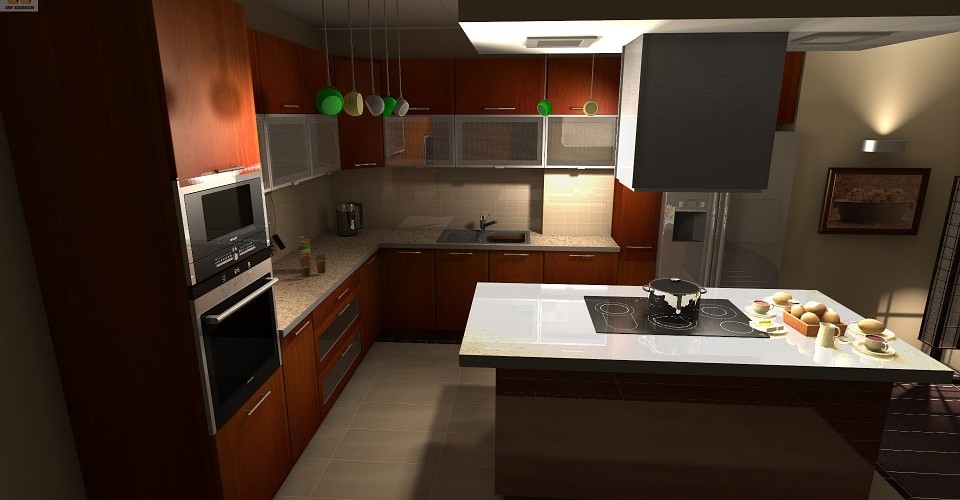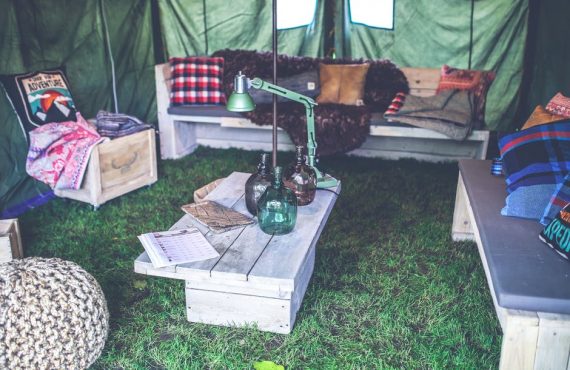The dining room is where family and friends converge to share lovely moments together. It is where small stories are enjoyed over good food. The dining room is a snug place that holds priceless memories. This is why dining is often seen as “the perfect opportunity to have a sculptural element that creates mood,” as Sara Story, an interior designer based in New York, said. Without a doubt, Sara Story was referring to lighting fixtures when she mentioned sculptural elements. Room lighting doesn’t have to be complicated. It only needs to fit the overall architecture of the room.
Apart from utility, lighting has another purpose, and that is to set the atmosphere in the dining room. To borrow the words of April Powers, an interior designer based in San Francisco, “The kitchen has become about so much more than food prep; it’s inevitably where everyone will congregate when entertaining, so it’s important that the lighting is both task-oriented as well as ambient and friendly.” If your kitchen is dull, then you need to look for ways on how to find the right dining lighting fixtures that can liven it up. There are different dining suites out there that you can choose from. And here are some dining and kitchen lighting tips you can try to make your dining nook more pleasant and inviting.
- Shape it up: Fixture must go with the table

When choosing a lighting fixture to go with your dining furniture, consider the overall architecture of your entire dining room. The light fixture that you’re going to choose should somehow relate to the dining table more than any other furniture. It doesn’t necessarily have to match it; it just has to be related to it one way or another. Shape is an important consideration when installing a dining room light fixture. Although there are no rigid rules, most interior designers recommend round fixtures for round tables and linear fixtures for square and rectangular tables. Chandeliers look better over circular tables while pendant lights look more appealing when placed over tables with sharp edges. No matter the shape, every lighting fixture should be about a third of the length of the table. Also, if you plan to go for clusters of individual pendant lights, always choose odd numbers. For instance, instead of installing two lights, go for three.
- Scale it down: Size and proportion matter

As a general rule, the lighting fixture should be proportionate to all the other elements in the room. For a better spread of light, every fixture should be at least 12 inches shorter than the table from all sides. Linear suspension fixtures should hang at about 30 to 36 inches above the table’s surface unless the ceiling is too high. In that case, a 40-inch minimum vertical clearance is advised. It is important that every light in your dining room is hung neither too low nor too high so that you can achieve the right scale and proportion. If you want to use two similar light fixtures in the dining room, make sure that you install them with the principle of balance in mind. For headroom to not be an issue, make your lights interact with your different dining room furniture.
- Put a dimmer on: Different lights for different occasions

For your dining room and kitchen to accommodate different dining events, you should make them more versatile, and there’s no better way to do that than to install lights that have dimming features. If your lighting fixtures are dimmable, you can change the mood in your dining room as needed. Lunch with the kids requires a more dynamic atmosphere, so you can turn the lights in full blast. But when your friends come over for a drink, you can tone the lights down for a more relaxed mood.
- Set the mood: Lighting for ambiance

What mood do you like to set in the dining room? You can choose fixtures depending on the ambiance you want to achieve. Chandeliers, for instance, give a luxurious but cozy feel because of the low level of light output that they produce. They also draw attention to the center of the room because of their eye-catching design. Recessed or track lighting are usually installed over kitchen sinks because the light they produce is well-aimed. Pendants are great over islands because they produce warm, ambient light that sets the mood for dining. There is an extensive list to choose from. You just have to know what your dining room really needs.
- Think layers: Add multiple levels of light

You can’t expect to install one main light fixture in your dining room and that’s it. One fixture is never enough when it comes to lighting a room. Ideally, you should have at least four layers of lighting to create depth and dimension. When adding layers, think both vertically and horizontally. How can you improve the lighting from the ceiling to the floor and from one side of the room to another? Do you need sconces to brighten up the corners and the serving areas? Do you need accent lights to highlight a certain object? Will a chandelier at the center of the room bring all seemingly unrelated design elements together? There is no such thing as a light fixture that brightens up all the nooks and crannies of the room. You will have to use layered lighting to fully set the perfect ambiance.
- Do the math: Go for energy-efficient bulbs

Design and utility are not the only factors you need to consider when choosing lighting fixtures for the dining room. Energy efficiency is one point to note, too. You can check the energy star in the fixture to certify whether it has gone through longevity testing and has scored a minimum of 80 CRI (color rendering index). To determine the necessary wattage that your dining room requires, you can apply a method suggested by Kichler Lighting. First, multiply the width of the dining room to its length in feet, then multiply the output by 1.5. The resulting number is the calculated amount of wattage that your dining room needs. Work around this number to achieve better energy efficiency.
Choosing the perfect lighting fixture for your dining room and kitchen is not as easy as it sounds, but it’s almost always worth all the effort. What you get in return is a room that exhibits the perfect mood and ambiance for family get-togethers and reunions with friends. As a final tip, remember that you can only get so much lighting fixtures. Just like in any other room, there is a limit to the number of lights you can install in the dining room. Study the architecture of the room to understand better how lighting can impact design. Have fun animating your dining room with the perfect light fixtures!











Comments are closed.